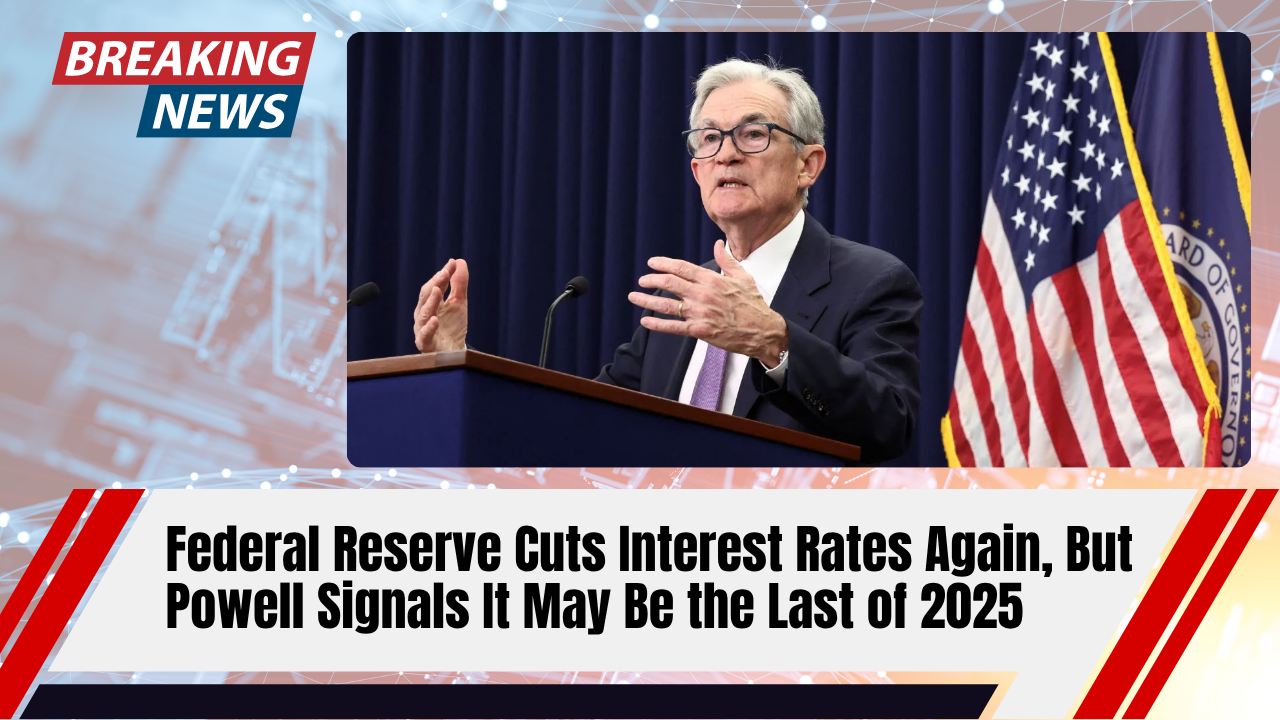WASHINGTON — The Federal Reserve lowered interest rates by a quarter percentage point on Wednesday, aiming to cushion a cooling job market — but Chair Jerome Powell suggested it may be the final rate cut of the year amid growing uncertainty and internal division within the central bank.
The decision brings the Fed’s benchmark rate to a range of 3.75% to 4.00%, marking the second consecutive reduction following cuts in September and October. While the move was widely expected, Powell cautioned that a lack of key economic data caused by the ongoing federal government shutdown could force policymakers to pause before acting again.
“We’re going to collect every scrap of data we can find, evaluate it, and think carefully about it,” Powell told reporters at a post-meeting press conference. “If you asked me could it affect the December meeting — yeah, you could imagine that. You know, what do you do if you’re driving in the fog? You slow down.”
Powell said missing reports on employment and inflation have left officials navigating blind spots as they weigh the risks of further cuts. “It would be risky to make major policy moves without a full picture of the economy,” he added.
Divisions Inside the Fed
The vote to cut rates passed 10-2, with dissent from two policymakers on opposite sides of the debate — Governor Stephen Miran, who wanted a deeper cut, and Kansas City Fed President Jeffrey Schmid, who argued no cut was needed due to still-high inflation. It was only the third time since 1990 that Federal Reserve members dissented in opposite directions on the same policy decision, underscoring the sharp divide about where the economy is heading.
Powell acknowledged the differences, saying “there were strongly differing views” about how to proceed in December. While some officials see a need to support the labor market, others worry inflation could reaccelerate if rates fall too quickly.
“A further reduction in the policy rate at the December meeting is not a foregone conclusion,” Powell said. “Far from it — policy is not on a preset course.”
The Economy’s Mixed Signals
The U.S. economy continues to present a complex picture: consumer spending remains strong among wealthier households, while lower-income families are showing signs of stress. Business investment has helped prop up growth, but job creation has slowed in recent months.
Powell described the current stance of monetary policy as “modestly restrictive,” noting it still applies pressure on inflation but allows flexibility for future adjustments. Inflation, measured by the Personal Consumption Expenditures (PCE) Index, stood at 2.7% in August, up from 2.3% in April — and is projected to reach around 3% by year-end, according to the Fed’s latest estimates.
He added that tariffs imposed by the Trump administration have temporarily pushed prices higher but said the overall risk of runaway inflation “has declined significantly since April.”
“Our goal,” Powell emphasized, “is to finish this cycle with the labor market in a good place and inflation moving toward 2%.”
Market Reaction and Liquidity Moves
Financial markets reacted cautiously to Powell’s remarks. Investors lowered their expectations for another cut at the Fed’s Dec. 9–10 meeting, assigning only 2-to-1 odds for further easing. The S&P 500 ended the trading day nearly flat after early gains faded.
In a separate move, the Fed announced plans to resume limited purchases of U.S. Treasury securities starting Dec. 1 to stabilize liquidity in money markets. The decision effectively ends its balance sheet drawdown and will keep total holdings at roughly $6.6 trillion, shifting maturing mortgage-backed securities into short-term Treasury bills.
As 2025 nears its end, Powell faces the delicate task of balancing economic risks with political and market pressures. “We’ll move carefully,” he said, “because acting too fast — or too slow — could be equally costly.”



